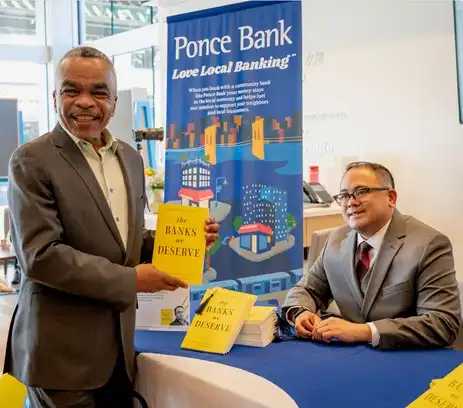New York City Mayor Eric Adams on Friday announced that — thanks to his administration’s successful asylum seeker management strategies and federal border policy changes the city advocated for that have continued to drive down the number of people in the city’s care for 27 straight weeks and reduce costs by nearly $2.8 billion over three fiscal years — 13 new emergency shelters serving Caribbean and other asylum seekers across the five boroughs, including Hall Street in Brooklyn, one of the city’s largest facilities that currently houses about 3,500 migrants, are slated to close by June 2025.
Immigration advocates say many of the migrants arriving in New York from the southern border are nationals of Cuba, Haiti, Venezuela and Nicaragua.
Adams said the new closures in “oversaturated” areas of Brooklyn, Manhattan and Queens will result in a capacity reduction of about 10,000 beds for migrants in the coming months.
Last month, Adams announced 25 additional sites that would be closing by March 2025, included the Floyd Bennet Field and Randall’s Island Humanitarian Emergency Response and Relief Centers.
By June 2025, Adams said his administration will have closed over 20 % of emergency sites opened in response to the asylum seeker crisis.
“The policies we implemented, and the tremendous work of the dedicated public servants who execute our mission, show how our administration continues to creatively and effectively manage an unprecedented crisis,” said Mayor Adams.
“The additional closures we are announcing today, provides yet another example of our continued progress and the success of our humanitarian efforts to care for everyone throughout our system,” he added. “Our intensive and smart efforts have helped more than 178,000 asylum seekers — 78 percent of the migrants who have ever been in our care — take the next steps on their journeys towards pursuing the American Dream.
“We will continue to do everything we can to help migrants become self-sufficient, while finding more opportunities to save taxpayer money and turn the page on this unprecedented humanitarian crisis,” Adams continued.
Thanks to his successful advocacy for federal executive orders relating to border policies by the Biden-Harris administration, which have significantly reduced the rate at which asylum seekers are arriving in New York City and seeking care; the administration’s “tireless efforts to expand work authorization and pathways, leading to more than 75 % of adults eligible for work authorization receiving or applying for it in our system; and the administration’s successful asylum seeker management strategies” — including reticketing, case management, and 30- and 60-day notices — Adams said the number of asylum seekers in city shelters has decreased for 27 straight weeks and is now at its lowest point in over 18 months.
The mayor said there are currently under 51,000 migrants receiving city shelter services, down from a high of over 69,000 in January of 2024 and out of more than 229,000 that have arrived in New York City seeking city services since the spring of 2022.
In addition to Friday’s closures, Adams said the city will open a smaller brick-and-mortar congregate facility on Bruckner Boulevard in the Bronx dedicated to single adult male residents transferred from the tent-based emergency site at Randall’s Island.
He said the city anticipates partnering with local nonprofits that provide services to migrants “in an effort to help them take the next steps in their journeys towards self-sufficiency.
“This overall decrease in the number of individuals in shelters will allow the city to continue to right size populations in neighborhoods that previously held a significantly larger number of shelters and migrants during the emergency phase of the city’s response,” Adams said.
Building off of the previously announced schedule of closures, the mayor said the city will shutter the following 10 facilities that have already been finalized, with the closure of three additional facilities to be finalized in the coming days: BK Way, Brooklyn; Hall Street Humanitarian Emergency Response and Relief Center, Brooklyn; Holiday Inn Express, Brooklyn; The VYBE BK, Brooklyn; 99 Washington Humanitarian Emergency Response and Relief Center, Manhattan; The Stewart Humanitarian Emergency Response and Relief Center, Manhattan; The Watson Humanitarian Emergency Response and Relief Center, Manhattan; Hotel Nedia, Queens; Holiday Inn/Staten Island Inn, Staten Island; and Ramada, Yonkers.
“We have a legal and moral obligation to ensure every New Yorker has a safe and warm place to rest their head at night,” said New York State Attorney General Letitia James. “But the conditions at the Hall Street shelter have not been working for its residents or the broader community. I thank City Hall for making the tough decision to close the shelter while ensuring that all the residents have another place to stay.”
“We’re relieved that the surge in new arrivals into our city these last few years has crested and that any strain placed on city services has lessened,” said Queens Borough President Donovan Richards, Jr., whose father hails from Jamaica.
“To our government and community partners who stepped up to ensure that our newest neighbors, including thousands of young families fleeing untenable situations in their home nations, had the resources they needed upon arrival in New York City, we are eternally grateful,” he added.
“But make no mistake that, as a new, hostile federal administration takes office later this month, Queens will continue to do whatever it can to support our immigrant brothers and sisters and defend our historically marginalized communities from any threat that may potentially come their way,” Richards continued. “That’s what being a New Yorker means at the end of the day.”
“Following significant advocacy from me and my constituents in Clinton Hill, as well as partners like the New York Immigration Coalition, I applaud the effort to finally close the Hall Street HERRC and end this separate and unequal shelter system for newly arrived asylum seekers,” said New York City Councilmember Crystal Hudson, whose grandparents hailed from Jamaica.
“I’m glad there’s a plan to responsibly transition existing residents to a new location,” added the representative for the 35th Council District in Brooklyn. “While this happens, we must also ensure the rich communities our diverse immigrant populations have established are maintained and that they can continue to have every single resource they need to thrive in their new home.”



























